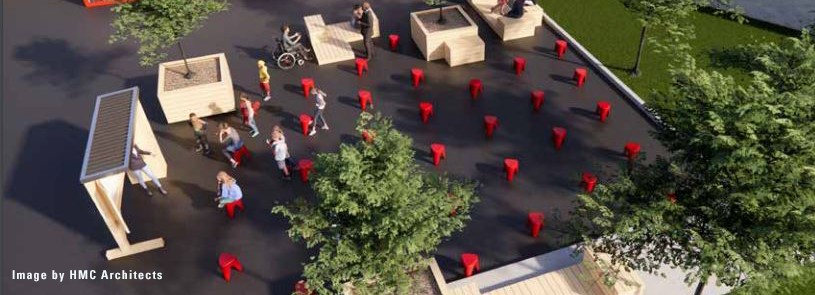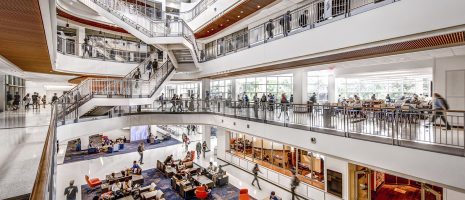Outdoor Learning: For some schools, it may become more than just a change of scenery

By Naseer Ahmed
As students continue to return to the classroom, many school districts are reimagining traditional learning spaces, in some cases bringing them outside to help support the safe return of in-person instruction. The Los Angeles County Office of Education, for example, recently released a 54-page report, Design Guidelines for Outdoor Learning Environments. I contributed to this report, along with thought leaders from HMC Architects, Bernards, and AHBE | MIG. School administrators, parents, and students also provided input.
Moving classes outside is not easy. A school must not only be willing to participate but also be in a location with a suitable outdoor environment.
As students continue to return to the classroom, many school districts are reimagining traditional learning spaces, in some cases bringing them out. On top of this, not all classes are good candidates for outdoor learning. While gym classes and reading lessons might have an easy time transitioning to outdoor environments, other subjects that require more resources might not.
The guide covered various components critical to outdoor learning spaces – seating, shading and protection, teaching tools and resources, space definition, landscaping, infrastructure, and construction. Some of the strategies included:
- Incorporating comfortable and adaptive seating options made from natural objects like wooden stumps and rocks. For example, some seating can double as a writing surface when kneeled next to.
- Utilizing movable overhead protection like umbrellas, trees, and customized structures to provide shade throughout the day.
- Customizing resources and tools such as rolling storage stations that can double as a small teaching station/desk for teachers. Rolling white boards can also be used to a similar extent.
- Employing modular building blocks to create distinct areas that decrease distractions and overall noise pollution.
- Incorporating plants to outdoor classrooms that reduce stress and increase comfort.
- Positioning water and power stations for easy access around campus to enhance flexibility.
- Properly coordinating construction efforts to minimize disruption to class schedules.
As the mechanical engineer on the report, my contribution focused on the infrastructure needed to provide necessary electrical, technology, and water resources for outdoor learning spaces. For example, besides hygiene and hydration uses, clean water can also be used in different classes such as art and certain sciences. Inexpensive, movable water supply stations can provide clean water for drinking and restrooms. Outdoor storage facilities positioned throughout the campus can also provide water and power utility connections.
Power could also be provided by power ports positioned frequently around the school. Besides chargeable power ports that can be used without having to run utilities, solar-powered ports can also be utilized to provide long-term flexibility. These stations can be placed almost anywhere on campus.
Outdoor learning environments are an innovative and healthy way to welcome students back to school. Highly flexible and spacious, outdoor learning environments are reimagining traditional classrooms to adapt to the 21st century’s post-COVID world. If you are interested in learning more about the components required for such environments, read the LACOE’s Design Guidelines for Outdoor Learning Environments or check out this article published by Building Design+Construction.











